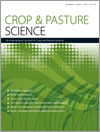Experiments were established in the Burdekin Irrigation Area in North Queensland, Australia, to measure whether yield improvements from breaking the sugarcane monoculture or fumigating the soil could be modified by the application of different rates of nitrogen (N) fertiliser. Experiments were conducted in consecutive crop cycles (phase 1, planted 1998; phase 2, planted 2001) using the variety Q117, with the interaction between N applications and rotation histories discussed for the two plant crops. Histories consisted of alternate crop, bare fallow or mixed grass–legume pastures for periods of 42–66 months, compared with continuous cane as plough-out replant without (PORP) or with (PORP-F) soil fumigation. The N strategies involved combinations of N rates (0–180 kg N/ha) and application times (at planting, 90 days after planting (DAP) or split between these times) in phase 1 and N rates (0–300 kg N/ha) in phase 2.
Histories had differing effects on N available to the cane crop and hence on response to N fertiliser. Some combinations of history and N rate were N-limited and strong linear relationships between biomass production or cane yield and crop N content could be developed. Critical N contents for biomass production (R2 = 0.93) and fresh-weight cane yield (R2 = 0.88) were 1.42 and 0.57 kg N/t, respectively. Application of N fertiliser was shown to have significant impacts on both tiller addition and the retention of tillers to produce harvestable stalks. However, the application of fertiliser N had limited (phase 1) or no (phase 2) capacity to provide the quantum of yield response in soil health benefits associated with breaking the sugarcane monoculture. Increasing N application rates above that required to optimise crop yield resulted in significant decreases in sugar content of cane and thus lower sugar yields. Yield increases solely from improved soil health (i.e. exclusive of N response) constituted advantages averaging 15% (phase 1) to 20% (phase 2) compared with PORP. These effects were manifest early in the establishment of primary shoots in the plant crops, although the longevity of these benefits was limited. Replanting cane after a 3-year crop cycle (plant, 1st and 2nd ratoon) on land that had been under pasture, crop, bare fallow or PORP-F histories (phase 2, cycle 2) showed carryover effects of histories on N availability and fertiliser N responsiveness, but limited yield impacts attributable to residual soil health benefits. These results reinforce the importance of crop rotation during breaks between sugarcane cycles to maintain soil health and improve crop productivity.





